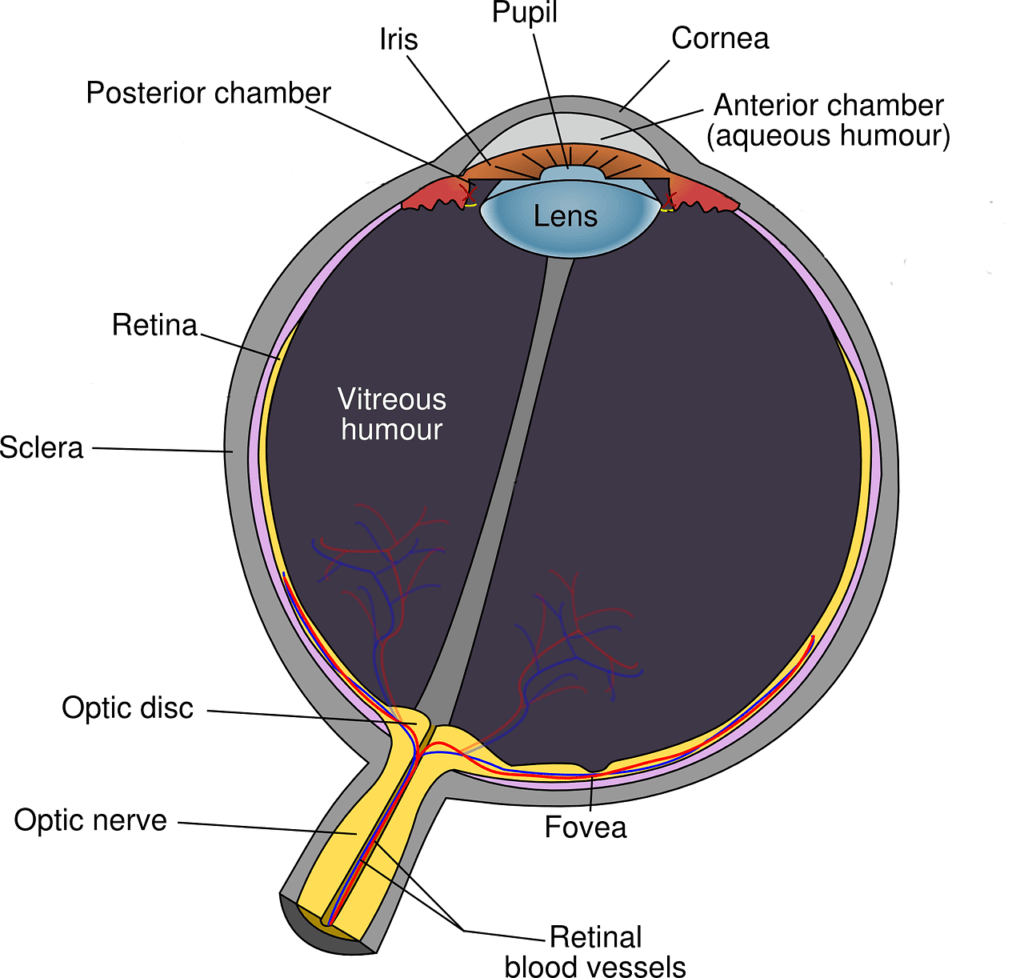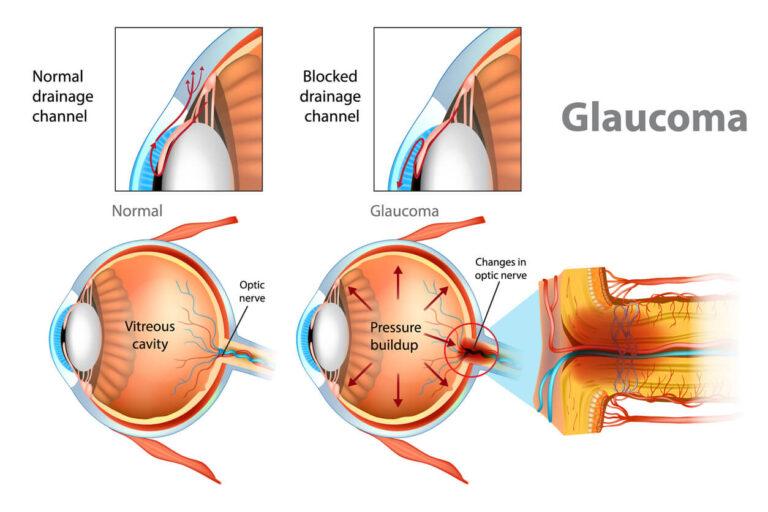What is glaucoma?
Glaucoma is a group of eye conditions that cause damage to the optic nerve at the back of the eye. The optic nerve is the large nerve that connects the brain and the eye together, the health of which is critical for good vision. It is estimated that 64 million people globally have glaucoma and unfortunately, it is thought that half the people with glaucoma don’t know that they have it.
Published: 26/05/2022
How do I know if I have glaucoma?
In eye care, glaucoma is often referred to as the “silent vision thief”. This is because most cases of glaucoma don’t have symptoms in their early stages and unless you have regular, comprehensive eye tests, you usually don’t know you have it until you have already lost a lot of vision. Unfortunately, vision that has been lost due to glaucoma cannot be recovered. The great news is that if glaucoma is discovered early, sight loss can be dramatically slowed or prevented.
What is the main cause of glaucoma?
The front section of our eye is filled with a clear fluid called aqueous humor. This fluid is important because it provides nutrition for the eye and keeps the eye in a normal pressurised state. Our eye constantly produces new aqueous humor and ideally, the same amount of fluid should flow out of the eye at the same rate. The fluid flows out of the eye through little drainage holes in the angle where our iris joins with our cornea. If the eye is producing too much fluid or the drainage holes are not working properly the fluid builds up. This increases the pressure within the eye ball which in turn damages the optic nerve. The optic nerve is made up of millions of tiny nerve fibres which send messages about what you are looking at to your brain to be interpreted. If these nerve fibres start dying, you will develop blind spots in your vision. Initially, the blind spots may be tiny and you may only notice them after large amounts of nerve fibres have died.

Are there are different types of glaucoma?
While there are several different types of glaucoma, the two main types are primary open-angle glaucoma and angle-closure glaucoma.
Primary open angle glaucoma is by far the most common form of glaucoma diagnosed. It occurs gradually when the fluid in the eye doesn’t drain as well as it should – sort of like a blocked drain. This causes the increase pressure in the eye and damages the optic nerve. Because it is a slow process, there is no pain and there are no noticeable sight changes at first.

Angle-closure glaucoma is much less common but occurs when the drainage angle (between your iris and cornea) becomes too narrow, inhibiting the outflow of fluid. If the drainage angle becomes completely blocked, you can have a sudden increase in eye pressure. This is called an acute attack and is an eye emergency – you should seek medical attention from your ophthalmologist or go to the emergency room immediately. Many people with angle-closure glaucoma develop it slowly and don’t know they have it till they get an acute attack. That is why it is so important to get regular eye checks. Your optometrist can tell you if you are at risk of angle-closure glaucoma and tell you of the signs of an acute attack to watch out for.
Even less common types of glaucoma are congenital (childhood) glaucoma, secondary glaucoma (caused by another underlying eye condition) and normal tension glaucoma (glaucoma that exists even though the pressure in the eye is normal)
How do I know if I’m at risk of glaucoma?
Anyone can get glaucoma but there are some factors that could put you in a higher risk group. These factors include:
- People over the age of 40
- Having a parent or sibling with glaucoma
- Being of African, Hispanic or Asian heritage
- Large amounts of myopia
- Having High eye pressures
- Having thinning of your optic nerve
- Having a previous eye injury
- Long-term use of steroid medication
- Having diabetes
How can glaucoma be detected?
During your routine eye exam, your optometrist should check the pressure in your eyes and assess your optic nerve to look for any signs of glaucoma. If you are suspected of having glaucoma, you’ll be referred to an ophthalmologist for further testing.
Can glaucoma be treated?
While glaucoma can’t be cured, there are many effective treatment options available including:
- Eye drops – to reduce the pressure in the eyes
- Surgery – to improve the drainage of fluid
- Laser treatment – to open up the drainage tubes or reduce the production of fluid
- Implanted glaucoma drainage devices

References
- “World Report on Vision” Geneva: World Health Organisation; 2019 Licence:CC BY-NC-SA 3.0 IGO.
- https://www.who.int/National Eye Institute https://www.nei.nih.gov/learn-about-eye-health/eye-conditions-and-diseases/glaucoma [online]
- American Academy of Ophthalmology ; Kiersten Boyd – “What is Glaucoma? Symptoms, Causes, Diagnosis, Treatment” Published online 22 September 2021.
- Mayo Clinic https://www.mayoclinic.org/diseases-conditions/glaucoma/symptoms-causes/syc-20372839 [online]

